Kolkata Chronicles: A Local's Guide!

Kolkata, or Calcutta, isn't just a city—it's an emotion. While I hold cherished memories of my favourite destination Goa, and my original hometown Ranchi, where I spent my childhood and which shaped my formative years, and my beloved Bangalore, where I thrived professionally, Kolkata resides at the intersection of these three beloved locales, embodying a unique blend of nostalgia, vibrancy, and cultural richness.
Not because it is a city where my parents reside now. Not because I am culturally connected to this city due to my origin or community to which I belong. Not even because I have myself lived in this city for many years. Kolkata resonates as an emotion in its very essence - its vibrant aura, rich heritage, and nostalgic charm. The city, fondly known as the "City of Joy," pulses with perpetual motion, a testament to its enduring spirit. The city that never sleeps, the city that is constantly in motion, that’s Calcutta which is now lovingly called Kolkata.
Nestled along the banks of the Hooghly River, Kolkata, formerly known as Calcutta, is a city of contrasts, where the old world seamlessly blends with the new. As the cultural capital of India, Kolkata beckons travellers with its rich history, vibrant festivals, delectable cuisine, and warm hospitality. Join me on an unforgettable journey as we unravel the treasures of this captivating metropolis.
Embrace History
Victoria Memorial
Begin your adventure at the iconic Victoria Memorial, a majestic monument that stands as a testament to Kolkata's colonial past. Admire the grandeur of this architectural marvel, surrounded by lush gardens and serene lakes. Delve into the city's history as you explore the galleries inside, showcasing a fascinating collection of artefacts and paintings from the British era.
The upper floor of the Victoria Memorial is a poignant tribute to India's struggle for freedom, adorned with intricate details of our valiant freedom fighters and their remarkable stories.
While it stands as a symbol of India's colonial past, the Victoria Memorial exudes grandeur and majesty, compelling visitors to return time and again to soak in its historical significance and architectural splendour.
St. Paul’s Cathedral
Also visit the 19th century Anglican cathedral, St. Paul’s Cathedral. The cathedral was completed in 1847 and is said to be the largest church in Kolkata and the first Anglican cathedral in Asia.
Explore Cultural Heritage
Indian Museum
Immerse yourself in Kolkata's vibrant cultural scene with a visit to the Indian Museum, one of the oldest and largest museums in India. Explore its vast collection of artefacts, ranging from ancient sculptures to Mughal paintings.
Rani Rashmoni Bhawan
After spending a few hours in Indian Museum take a stroll at esplanade and blend in with the crowd. Just next to Esplanade main junction is S.N. Banerjee road. Take the road and visit Rani Rashmoni Bhawan. This part of Kolkata is one of the oldest one, it is called Janbazar. The most famous resident of Janbazar was Rani Rashmoni. Married at the age of 11 to the Zamindar of Janbazar, she constructed Dakshineswar Kali Temple and engaged in numerous philanthropic activities.
Nandan
Later or another day, you may also choose to witness the artistic performances at Rabindra Sadan or Nandan, showcasing the rich legacy of Bengali literature, music, and dance.
Click the link to access a comprehensive travel itinerary for Kolkata:
Dive into the vibrant pulse of the city
Park Street
Park Street, the pulsating heart of Kolkata, infuses life into the city with its vibrant energy and contagious vibes. You cannot miss this neighbourhood when in Kolkata. Just walk around the street, enjoy the culinary scenes, the heritage structures. Take detours and walk through the different streets emerging from the central Park Street to simply feel the vibe of the place. There are many pubs and restaurants, and Park Street also has a good night life, if you want to experience it.
During Christmas, Park Street transforms into a dazzling spectacle of lights, colours, and festive cheer. The iconic street comes alive with the joyful spirit of the season. The entire stretch of the street becomes adorned with vibrant decorations, including twinkling fairy lights, elaborate Christmas trees, and themed installations. Visitors can stroll along the illuminated streets, soaking in the festive atmosphere and living the moment. It's a time when people from all walks of life come together to celebrate the spirit of Christmas in this iconic part of Kolkata, making Park Street a must-visit destination during the holiday season.
While exploring Park Street, I recommend walking up to New Market and experiencing the city like a true local. You may find many small shops by the roadside, choose one of them and try a snack or tea maybe.
New Market
The New Market, formerly known as Sir Stuart Hogg Market was inaugurated in 1874, as this giant shopping arcade only for the English populace. It is highly suggested to experience the joy of shopping in this historical market and definitely enjoy the chaos too which is so unique to Kolkata.

There are several renowned and historic confectioners in New Market like Nahoum & Sons, which was established in 1902, and still exits with its original mahogany cabinetry and marble counters. Kalimpong Cheese and Bandel Cheese are local cheese available only in New Market.
Admire the architectural marvels
Howrah Bridge
When in Kolkata, driving through or walking on the Howrah Bridge is a must activity. An iconic landmark in Kolkata, the Howrah Bridge is a huge steel bridge over the Hooghly River. When commissioned in 1943, Howrah was the 3rd-longest cantilever bridge in the world, It has since been surpassed by three bridges, making it the sixth-longest cantilever bridge in the world

Image credit: Unsplash, courtesy Sohan Rayguru
Also known as Rabindra Setu, it connects Howrah and Kolkata, hence is regarded "The Gateway to Kolkata". It carries 100,000 vehicles and countless pedestrians daily.
Keeping the heavy traffic in mind, it is better to keep a few hours in hand when out to see the Howrah Bridge. You can make a circle by taking the Howrah Bridge from Kolkata and returning back through another newer bridge, Vidyasagar Setu.
While returning take a short break at Princep Ghat and Millennium park. Princep Ghat is a ghat built in 1841 during the British Raj, along the Kolkata bank of the Hooghly River in India.
James Princep Monument
Located along the banks of the beautiful Hooghly River, the Palladian porch was built in the memory of the eminent Anglo-Indian scholar and antiquary James Princep. It was built in 1843. The Vidyasagar Setu acting as a backdrop elevates the allure of this monument, adding a touch of glamour and charm to the scene.
At the Princep ghat, you may spend some time sitting by the banks of the Hooghly river and gazing at life moving in slow motion. Take a romantic boat ride, especially during the golden hours of sunset, when the sky puts on a dramatic display.
Also you can take a walk by the banks of the Hooghly rive, stop by for some tea in earthen pots and egg roll, the staple snack of Kolkata.
Click the link to access a comprehensive travel itinerary for Kolkata:
Discover the Colonial splendour
Dalhousie square and around
Some of the earliest English quarters of Calcutta were in an area known then as Dalhousie Square. The best way to discover this locality is by walking. Just walk around and gaze at the imposing colonial structures, built during the British era.
In the eighteenth and nineteenth centuries, Calcutta was the capital of British India and Dalhousie Square was the city’s financial, social, and political nucleus. Calcutta’s first parish church, St John's Church was among the first public buildings erected by the East India Company after Kolkata became the effective capital of British India. Preservation of this whole locality with so many heritage structures has been a real challenge for the Government.
The buildings that line the square range in date from 1695 and 1947. After India’s independence from the Empire, event, Dalhousie Square was renamed Benoy-Badal-Dinesh Bagh (B.B.D. Bagh) after the three famous freedom fighters who lay their lives for their country. You can explore Dalhousie separately or club it with Howrah bridge and Princep ghat visit.
Dive into the rich tapestry of literature, art, and history
Jorasanko Thakurbari
Exploring Kolkata without visiting the Nobel Laureate's residence, Jorasanko Thakurbari, feels like missing out on a sacred pilgrimage of art and literature, where history whispers through every corridor.
Jorasanko Thakurbari transports us to another era. As I stood in the courtyard or wandered through the corridors, I could almost hear the soft whispers of women and the echoes of their laughter. The corridors seemed to come alive with the presence of youthful brides, gracefully adorned in sarees and gold jewellery, their anklets tinkling melodically with each step they took.
It's ironic that while standing at Jorasanko Thakurbari, I found myself envisioning the women of the household more than the great poet and writer, Rabindranath Tagore. Of course, I saw him too - Rabindranath Tagore - his presence felt in every corner, in every display of his works, his writings, his paintings. Jorasanko is a place where his entire life has been encapsulated. And yes, I saw him too, walking through those corridors, in his long robe, lost deep in his thoughts.
Marble Palace
Marble Palace is one of the most well-preserved examples of Neo-classical architecture in the heart of Kolkata. The house was built in 1835 by Raja Rajendra Mullick, a wealthy Bengali merchant with a passion for collecting works of art. The grounds include a lake, a rock garden, a private zoo, and is a site remarkable for its art collection.The building has inherited its name owing to 126 different types of marble used to cover the walls, floors, and sculptures.
Because Marble Palace remains a private residence, photography is prohibited, a permit must be obtained 24 hours in advance from the West Bengal Tourism Information Bureau at B. B. D. Bagh, Kolkata. Marble Palace is open from 10am to 4pm on all days except Mondays and Thursdays.
Netaji Bhawan
Netaji Bhawan is a heritage building in Kolkata, West Bengal, maintained as a memorial and research centre to the life of the Indian nationalist "Netaji" Subhas Chandra Bose.
The house, built by Bose's father in 1909, is owned and managed by the Netaji Research Bureau and includes a museum, archives and library.
Bose escaped from house arrest at Netaji Bhawan in 1941 and fled to Berlin. After that, he traveled to Japan-occupied Southeast Asia by submarine organized Indian National Army, and fought against the British Empire.
Relics of Bose's footprints are exhibited in the museum.The staircase, which Netaji used for his secret departure from this house and the car used by him at that time are also in display. Netaji’s study and bedroom is preserved inside this house in original conditions. The site has an immense historical importance and worth a visit.
College Street
Let’s continue our journey to College Street, the intellectual hub of the city, lined with bookstores, historic buildings, and bustling cafes. College street is an iconic area in Kolkata, named due to the presence of numerous colleges and universities of Kolkata. It is also known as Boi Para as this street is famous for small and big book stores, selling new and old books. It will be interesting to walk on this street and experience this intellectual corner of the city.
Coffee House
When in College street, definitely visit the iconic Coffee House, which has been for a long time a regular hang out and a renowned meeting place (adda) for intellectuals such as Satyajit Ray, Amartya Sen, Mrinal Sen and many more renowned intellectuals of Bengal. Many political and cultural movements might have taken birth at this place in the past.
The history of the Coffee House at College Street starts with Albert Hall, founded in April 1876. Albert Hall was the primary residence of Ramkamal Sen, Treasurer of the Bank of Bengal and Secretary of the Asiatic Society, Calcutta, in the early 19th century.
Later, the Coffee Board decided to start a coffee joint from the Albert Hall in 1942. Notable citizens were frequent visitors to the place. The place became a meeting place for poets, artistes, literati and people from the world of art and culture.
What to do at the Coffee house? Spend some relaxing adda time here over coffee and snacks.
Check this free travel itinerary for easy planning:
Unravel the Charms of Old Kolkata
Bowbazar
Bowbazar, situated in the heart of Kolkata, is a vibrant neighbourhood that encapsulates the city's essence. Bowbazar is a busy commercial area in central Kolkata, home to numerous lively markets like Chandni Chowk. Known for its bustling streets, Bowbazaar is a melting pot of cultures. The area is famous for its vibrant markets, where one can find everything from traditional textiles to exquisite jewellery. A particular street, BB Ganguly Street, is packed with jewellery shops. The neighbourhood is one of the last remaining sections of the city where tropical colonial architecture is still visible, some preserved and some decrepit.
Bowbazar also boasts of historical landmarks. Green domes and minarets decorate the ornate 19th-century Tipu Sultan Masjid mosque, while palm-shaded Santosh Mitra Square park is famed for its extravagant shrines during fall’s Durga Puja festival. With its bustling atmosphere and rich history, Bowbazar offers visitors a glimpse into the soul of Kolkata. A certain newspaper called it older than Calcutta itself.
While some old mansions and houses have been maintained well, most of them are in shambles. In some alleys of the area, life seems to have stood still. Walk around the alleys aimlessly, only to get a feel of the real old Kolkata.
Read a heartwarming story about Bowbazar:
Sovabazar
Step back in time as we meander through the narrow lanes and bustling markets of North Kolkata. You haven’t truly experienced Kolkata until you've wandered the labyrinthine alleys of North Kolkata. I will talk about Sovabazar or Sutanuti majorly, but there are countless other hidden gems waiting to be discovered in the vicinity of Sovabazar. Simply stroll through these streets to be whisked away to another era.
The streets of North Kolkata are adorned with architectural marvels from a bygone era, lining both sides of the alleys. Yet, amidst the past grandeur, which is a bit in shambles now, these narrow passages bear witness to a tumultuous past - from the colonial days of the British Empire to the turbulent times of the infamous Naxal movement in Kolkata's history.
The glorious days of Sovabazar started with the decision of the British to build the new Fort William in the heart of Gobindapur. The inhabitants of the village were compensated and provided with land in Taltala, Kumortuli and Sovabazar.
Sovabazar Rajbari
Sovabazar Rajbari, constructed around 1700, saw further expansion in the 1830s. The tradition of hosting grand-scale Durga Puja celebrations at Sovabazar Rajbari dates back to the 18th century, a tradition that endures to this day. Witnessing Durga Puja festivities at Sovabazar Rajbari promises an unforgettable experience, steeped in history and cultural richness.
Kumartuli
Wander through the labyrinthine streets of Kumartuli, the potters' quarter, where skilled artisans craft exquisite clay idols for religious festivals. These artisans are extremely skilled and are known as kumars. These people have been crafting clay idols of Goddess Durga and other deities for generations. Many potter from this very locality only manufactures clay idols for various festivals but also regularly exports them worldwide. The place comes alive specially before Durga Puja, the most important festival of Bengal.
Old mansions of North Kolkata
As you stroll through the northern parts of Kolkata, you will encounter numerous grand mansions, some in a state of disrepair, and others shrouded in eerie tales. Putulbari is one such mansion. Putulbari, an ancient mansion situated in Shovabazar along the banks of the Hooghly River in Kolkata, holds a mysterious allure. Partly abandoned, it has spawned tales of a spooky past, with rumours of it being haunted. While the truth remains elusive, merely glimpsing the mansion from the outside ignites a sense of curiosity, beckoning exploration and intrigue. Please refrain from entering the mansion as it is occupied by tenants.
Immerse in Spiritual Serenity
Dakshineswar Kali Temple
Experience the spiritual essence of Kolkata at the renowned Dakshineswar Kali Temple and Belur Math. Marvel at the intricate architecture of Dakshineswar, dedicated to the Hindu goddess Kali, and witness devotees offering prayers with unwavering devotion. The temple is known for its association with Ramakrishna Thakur and Ma Sarada Devi, mystics of 19th century Bengal.
While there is no strict dress code for entering the Dakshineswar Kali Temple, it is recommended for visitors to dress conservatively, in attire that is respectful of the temple's spiritual and cultural significance.
Belur Math
At Belur Math, founded by Swami Vivekananda, soak in the tranquility of this spiritual retreat overlooking the Hooghly River. Belur Math on the banks of the Hooghly includes temples dedicated to Ramakrishna, Sarada Devi and Swami Vivekananda.
Durga Puja
Also, if you can plan your trip around the month of October, try to experience Kolkata’s Durga Puja for a couple of days. Durga Puja, also known as Durgotsava or Sharodotsav, is an annual festival of India, but specifically important to Eastern India. The festival reveres and pays homage to the Hindu goddess Durga. Durga Puja in Kolkata has been inscribed on the intangible cultural heritage list of UNESCO in December 2021.
Since 1610, the Sabarna Roy Choudhury family has been organizing Durga Puja at their original residence in Barisha, Kolkata. This is probably the oldest Durga Puja festival in Kolkata. Nabakrishna Dev started Durga Puja at Shobhabazar Rajbari in 1757. Earlier, Durga Puja in Kolkata was confined to wealthy families. In 1910, the first Barowari Durga Puja in Kolkata was organized. Since 1985, the Asian Paints Authority has introduced the practice of awarding the Durga Puja Committees of Kolkata.
Durga Puja is mainly a five day festival, but now a days the festive mood in Kolkata around Durga Puja stays for total 15 days or more. The main attractions of Durga Puja in Kolkata are the decorations, sculptures, pandals, lights and illuminations, and carnival.
Durga Puja is seen as the best instance of the public performance of religion and art, and as a thriving ground for collaborative artists and designers. During these 15-20 days, the city comes alive with festive fervour, transforming into a vibrant playground of art.
Indulge in Culinary Delights
No visit to Kolkata is complete without savouring its mouth-watering cuisine. Embark on a gastronomic journey by experiencing the delightful delicacies of the famous Kolkata restaurants and also relishing on Kolkata street food like phuchka (pani puri), kathi/egg rolls, alu chop, kochuri, kobiraji etc. at iconic eateries across the city You cannot end a meal without tasting the pride of Kolkata, Kolkata sweets – be it rosogolla, mishti doi (sweet yogurt) or shondesh at the most reputed sweet shops of Kolkata. No other place boasts such innovation and creativity in making sweets as we see in Kolkata.
Discover the rich history and evolution of Kolkata's sweets in one of my published stories:
Street Shopping
At the end a visit to New Market or Gariahat is must for the ultimate street shopping experience. Both are bustling shopping destinations, offering everything from traditional textiles to modern gadgets. Immerse yourself in the lively atmosphere, bustling crowds, and bargaining fun that define the essence of street shopping in Kolkata.
Sunset Cruise on the Hooghly River
As the sun begins to set, embark on a serene cruise along the Hooghly River, offering panoramic views of Kolkata's iconic landmarks. Watch the city come alive with twinkling lights and bustling activity, as we sail past the iconic Howrah Bridge and majestic Vidyasagar Setu. This is a must do activity when in Kolkata. Trust me, you won't regret it. There are many options to choose from, just go with a choice offering a great experience as well as comfort. And here comes your time to raise a toast to the beauty of Kolkata against the backdrop of a mesmerising sunset.
Click the link to access a comprehensive travel itinerary for Kolkata:

Image credit: Wikipedia
To Conclude
Kolkata, often referred to as the "City of Joy," is a tapestry of colours, flavours, and experiences waiting to be explored. From its grand monuments to its bustling streets, every corner of this city has a story to tell.
As you wander through its lanes and alleys, you will discover that Kolkata is not just a place - it's an emotion, a feeling that lingers long after you've bid adieu to the city. It is a very crowded and noisy city and yet, travellers end up taking back with them the spirit of Kolkata - the warmth of its people, the richness of its culture, and the timeless allure of its heritage.
So are you ready to embark on this unforgettable journey, and let Kolkata cast its spell on you?




















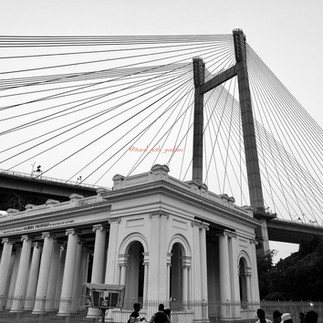







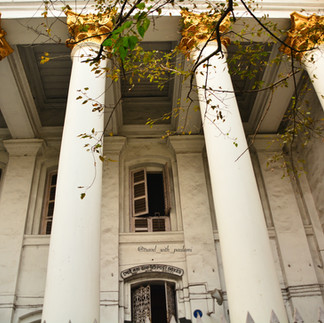



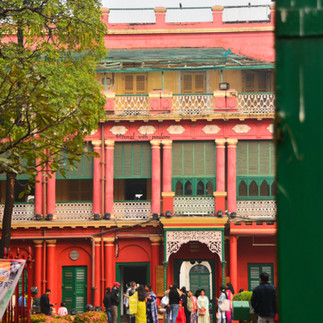





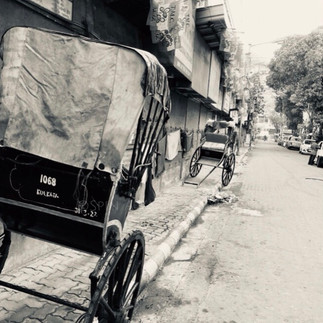















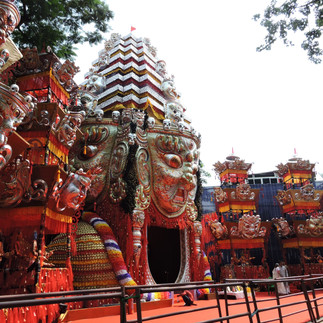







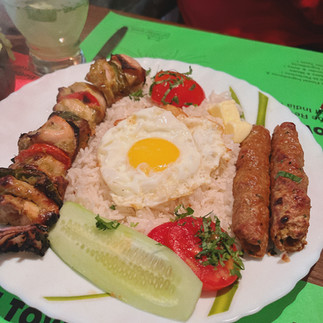










Comments